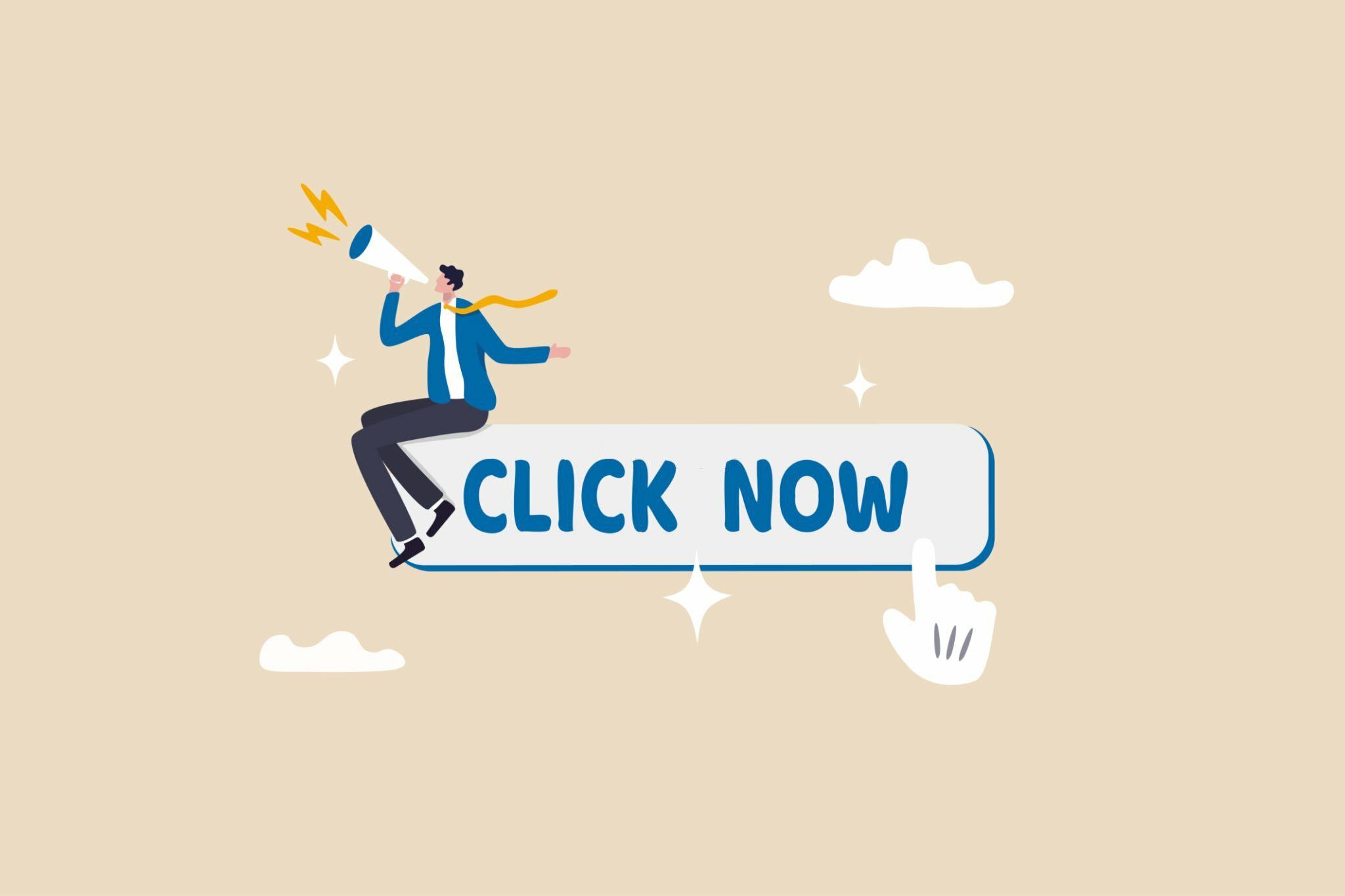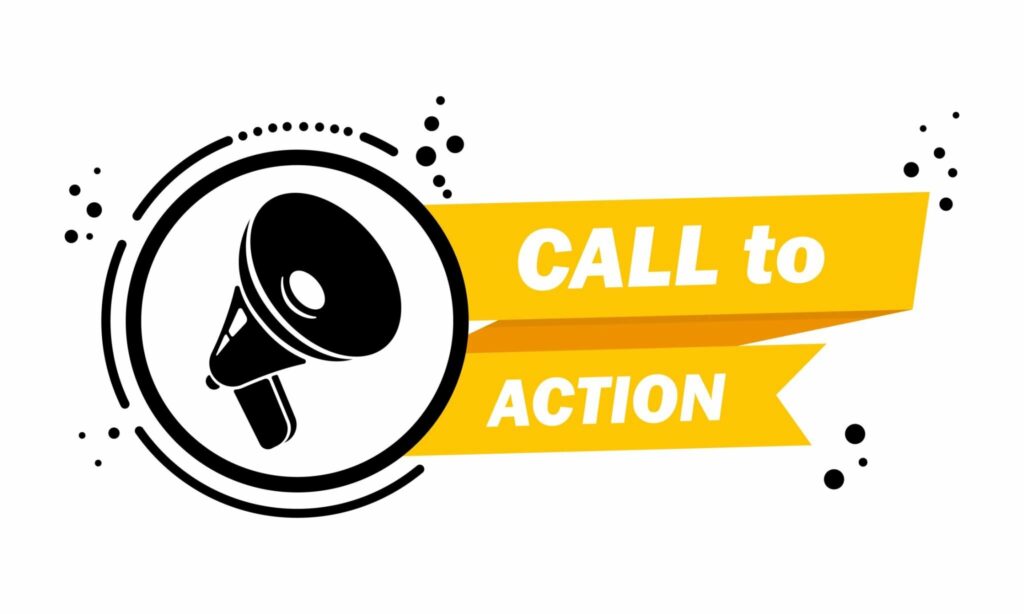Are you ready to convert website visitors into interested buyers?
Gaining proficiency in creating compelling calls to action (CTAs) is the first step in improving the visibility of your website. Initially, an effective call to action allows you to smoothly lead your guests through their experience, ensuring they are satisfied.
Second, it gives you the power to directly affect their decisions, whether buying something, subscribing to a newsletter, or contacting your company.
With our professional advice, you’ll learn not one but several powerful call-to-action techniques that convert inactive website visitors into proactive, involved customers, resulting in conversions and the development of long-lasting connections.
For now, let’s begin with the basics.
What is a CTA, and why is it important?
Call-to-Action (CTA)
A Call-to-Action (CTA) is a specific instruction or directive given to the audience or website visitors to prompt them to take a particular action. CTAs are typically designed to encourage immediate responses, engagement, or conversions. They are often presented as buttons, links, or statements that indicate what action the user should take. Common examples of CTAs include “Sign Up Now,” “Buy Now,” “Download Your Free Ebook,” “Subscribe,” or “Get Started Today.”
Why is a call-to-action (CTA) important?
Call-to-action (CTA) elements are versatile tools used in various contexts to prompt specific actions from an audience.
Here are some common uses of CTAs:
Lead Generation
CTAs in the “Sign Up” or “Subscribe” buttons are often used to collect user information, such as email addresses, for building mailing lists. Sales and Conversions: “Buy Now” or “Add to Cart” CTAs are essential for e-commerce websites to encourage users to purchase.
Content Downloads
CTAs like “Download Now” offer free resources, such as eBooks, whitepapers, or templates, in exchange for user information or engagement.
Request a Quote
Businesses can use CTAs to prompt users to request price quotes or estimates for services or products.
Booking or Reservations
In industries like hospitality or event planning, CTAs encourage users to book hotel rooms, make restaurant reservations, or purchase event tickets.
Contact Forms
CTAs like “Contact Us” or “Get in Touch” lead users to contact forms where they can inquire about products or services.
Social Media Engagement
CTAs can drive users to follow, like, share, or comment on social media posts or profiles.
Surveys and Feedback
Encourage users to provide feedback or participate in surveys to gather valuable insights for improving products or services.
Newsletter Subscriptions
CTAs invite users to subscribe to newsletters for updates, news, and promotions.
Trial Sign-Ups
For software products, CTAs like “Start Your Free Trial” encourage users to try out a service or application.
How to Write a Killer Website Call-to-Action
Effective copywriting for Call-to-Action (CTA) elements is essential to inspire action and engagement. Here are some tips and styles to consider when creating compelling CTAs:
Be Clear and Specific
Your CTA should leave no room for ambiguity. Use clear, concise language that directly communicates the action the user should take. For example, instead of “Click Here,” use “Download Your Free Guide.”
Action-Oriented Language
Use action verbs that convey a sense of urgency and prompt users to take immediate action. For example, “Shop Now,” “Get Started,” or “Claim Your Offer.”
Value Proposition
Highlight the benefits or value users receive by clicking the CTA. For example, “Unlock Exclusive Access” or “Save Big Today.”
Personalization
Customize your CTA to the people who will be using it. Make use of language that speaks to their wants and needs. For instance, a dating website’s “Find Your Perfect Match” feature.
Urgency and Scarcity
Create a sense of urgency using phrases like “Limited Time Offer” or “Last Chance.” Scarcity can be emphasized with “Only a Few Left” or “While Supplies Last.”
Benefit-Driven
Focus on how the action benefits the user, like to know how a product or business will benefit them. For example, “Boost Your Sales” is more compelling than “Click Here.”
Ask a Question
Engage users by asking a thought-provoking question in your CTA. For instance, “Ready to Change Your Life?”
Emotional Appeal
Use emotional triggers that connect with the user’s feelings. For example, “Join a Caring Community” for a charitable organization.
FOMO (Fear of Missing Out)
Instill a fear of missing out by mentioning limited-time offers, exclusive access, or special opportunities. For example, “Don’t Miss Out on Huge Savings.”
Where to place a call-to-action on your website 
CTA placement should be well-thought-out and tailored to your website’s goals and user journey. It’s important to balance making CTAs noticeable and avoiding overwhelming the user with too many calls to action on a single page. Keep the user’s experience in mind and ensure that your CTAs are relevant to the content and the stage of the customer journey.
Here are key locations and contexts where you should consider including CTAs:
Above the Fold
Place a prominent CTA near the top of your webpage so that users see it without having to scroll down. It should be the first thing visitors notice.
Homepage
Your website’s homepage should have clear and compelling CTAs. They might be related to the main actions you want users to take, such as signing up, exploring products, or learning more about your services.
Product or Service Pages
Place CTAs like “Buy Now” or “Request a Quote” on pages showcasing your products or services to encourage conversions.
Blog Posts
At the end of blog posts, include CTAs to keep readers engaged, such as “Read More,” “Subscribe to Our Blog,” or “Download Related Content.”
Landing Pages
Landing pages are often dedicated to specific campaigns or offers. Include CTAs that align with the campaign’s goals, such as “Claim Your 20% Discount” or “Register for the Webinar.”
About Us Page
Provide a CTA encouraging visitors to get in touch, such as “Contact Us” or “Request More Information.”
Contact Page
Include CTAs to guide users in sending inquiries or messages, like “Send Us a Message” or “Request a Call Back.”
Pricing Page
Use CTAs that lead users to subscribe, purchase, or request quotes based on the pricing information provided.
FAQ Pages
Add CTAs to direct users to further assistance or to contact support for any unresolved queries.
Checkout or Cart Pages
Simplify the purchasing process by placing clear “Proceed to Checkout” or “Complete Purchase” CTAs.
Conclusion
In conclusion, compelling call-to-actions (CTAs) drive website traffic and effective digital advertising. A compelling call to action (CTA) can convert infrequent visitors into devoted patrons.
To effectively convey the importance of the action and the procedures needed to do it, you must nevertheless employ explanatory and compelling language. You may write clear CTAs by using action-oriented language, delivering a precise message, and highlighting the benefits consumers will receive.
Sign up for our newsletter to get informed each time a new blog post gets published.

